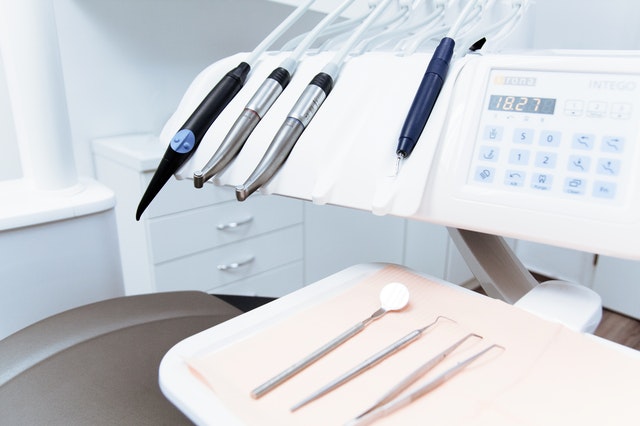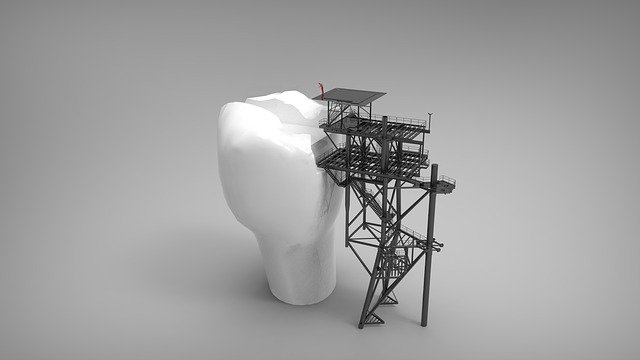Today we are publishing a very useful article in English so that our international audience can also learn more about the pros and cons of dental implants.
If you lost your teeth, it is highly recommended to replace it as soon as possible. Why is that? We might think, since we have plenty of teeth, a shortage here and there does not matter. However, it does matter where that one tooth is missing. If we lose one of our front teeth, we have to replace it as soon as possible due to the aesthetic effect, because we feel uncomfortable if our incomplete teeth appear while smiling and speaking.
1. Why you should replace a lost tooth as soon as possible
Tooth loss is not only to be replaced as soon as possible due to aesthetic problems. It is important to consider other aspects of teeth just because we typically lose our chewing/molar teeth first.
If a chewing tooth is missing, it is also worth replacing it as soon as possible because food is always stuck in the tooth gap so we cannot chew properly.
The tooth above the lacking ones, sooner or later „grows” a little, sticks out of the denture because its counterpart is missing.
Teeth next to a tooth gap tilt pretty slowly because there is nothing to support them from one side. As the adjacent teeth are tilted, the gap becomes smaller and it also becomes more difficult to replace the lost tooth in any way.
The jaw bone under the lost tooth will not be loaded with chewing, so the bone will recede. If the bone recedes and more teeth are missing, the structure of our face will change, the face will look older. In addition, it will not be possible to place an implant in the jaw bone without bone grafting.
If we decide to replace our teeth, there are several options available.
Depending on how many teeth need to be replaced, the number of options also varies.
2. The Pros and cons of dental implants: Teeth replacement in case of 1-3 missing teeth
2.1.Teeth replacement with implants
The tooth replacement solution with a dental implant consists of 3 parts. The screw/dental implant, which is the artificial root, is inserted into the jaw bone. After the appropriate healing time has elapsed, which is 3-6 months, the implant is exposed and and the abutment is inserted and finally the crown is fitted. This solution behaves completely like a natural tooth.
In the case of the implant solution, the teeth next to the missing tooth are not treated. In the case of a tooth gap indicated, either 1-3 implant screws are placed next to each other or in case of a 3-tooth-gap, two implants are placed at the sides of the tooth gap and an implant supported bridge is fitted on the two implants.
If you have lost your teeth a long time ago, it is possible that a sinus lift and bone grafting will also take place in order to insert the screw in a suitable bone stock.
The implants are made of biofriendly titanium material. The crown can be made of PFM (porcelain fused to metal) or zircon depending on aesthetic needs and available budget.
The implant solution is very durable. The implanted screw stays in our mouths for up to 50+ years, and lots of clinics provide a lifetime guarantee for better quality dental implants. Replacement of crowns on implants is due every 10 to 15 years, depending on the load they receive.
The implant solution is completely fixed, it resembles our natural teeth in everything, it is perfect to eat, chew, talk or even whistle. Additionally, they are also very aesthetic.

2.2. Teeth replacement with dental bridges
In this case, the teeth next to the tooth gap are also treated. Teeth next to missing teeth are filed down by the dentist so they can hold the bridge as support pillars. In this case, the treated teeth lose 30-40% of the tooth material. This solution is usually recommended by the dentist if the teeth next to the missing teeth are damaged and would need treatment anyway.
Bridges can be made of PFM or zircon. Zircon bridges provide a very natural effect, so it is used in the front region. PFM bridges are cheaper but durable, so it is usually used as a bridge for chewing teeth.
Bridges are a fixed, durable solution, although they need to be replaced after a period of 7-12 years because the bridge itself or the teeth used as a support pillar can weaken.
2.3. Teeth replacement with partial removable dentures
In this case, the replacement is done with either a partial denture with a metal frame or a denture made of acrylic. In both cases, you attach the partial denture to the existing teeth with metal clips. This solution is the least stable and durable and wears out quickly. It may move in the mouth, both during chewing and while speaking. However, is that it is by far the cheapest.
3. The Pros and cons of dental implants: Teeth replacement in case of 4-16 missing teeth
3.1. Teeth replacement in case of 4-8 missing teeth
In such cases, the dentist places implant screws on the edges of the teeth gap. If the tooth gap is longer than 3 teeth, one or more implants are placed in the middle of the tooth gap to ensure stability.
A dental bridge can no longer be used in cases of tooth deficiency of this magnitude.
Partial dentures are a possible solution that has already been described above.
3.2. Solution with implants for a toothless mouth
If an toothless mouth needs to be treated, the All-on-4 or All-on-6 solution is used by dentists. For All-on-4, an implant supported denture is placed on 4 implants. It is a fixed solution, it does not move in the mouth, it does not slip away, you can eat, drink, talk or sing with it, but the denture can be removed by a dentist. In this case, the denture can be made of PFM or zircon.
In the case of All-on-6, a complete bridge is placed on 6 dental implants, which is a completely fixed solution, cannot be removed even by the dentist. It is exactly the same as natural teeth, both aesthetically and functionally. Similar to the All-on-4 solution, the complete bridge can be made of PFM or zircon.
3.3. Tooth replacement with removable dentures
In such cases, the removable denture cannot be attached to the teeth because they no longer exist. Generally, gels or adhesives can be used to increase stability and attachment to the gums, but this should be repeated daily for the expected effect. It is the cheapest, however, the least comfortable solution.
4. Pros and cons of dental implants – solutions
Let us summarize the pros and cons of implant-based dental solutions.
4.1 Pros of dental implants
- Provides the most durable solution
- Jaw bone does not recede due to lack of teeth, structure of your face does not change, so we do not look older than our real age
- Offers a solution for all types of tooth gaps, be it the absence of 1 tooth or a completely toothless mouth
- Perfectly compensates for the lack of teeth, so the speech, singing, chewing and biting function is the same as with natural teeth
- Perfectly aesthetic, resembles natural teeth
- Completely painless treatment even under local anesthesia
- It is not necessary to include other, even healthy teeth in the treatment, so there is no need to grind down the (healthy) teeth next to the missing teeth
- The implant screw is made of bio-friendly materials so it’s not harming the body. The same titanium is used in other surgical procedures
- With the help of bone replacement and sinus lift, it can also be used in cases when the amount of bone in the jaw is already less, i.e. there has been a lack of teeth for a long time.
4.2 Cons of dental implant
- Not applicable for certain diseases
- Due to the recovery times, the treatment takes 3-6 months, so a temporary solution is needed for this time
- More expensive than other tooth replacement solutions
In Hungary, dental treatment is of very high quality and the price is very favorable for foreign patients. Dentist education is also of very high quality. lots of foreign students study in Budapest. At the same time, treatment prices in Hungary are much cheaper than in Western Europe or Canada and the US. Many foreign patients visit Budapest for treatment and, based on our experience, the most sought ones are dental implant treatments in Hungary, like All-on-4 and All-on-6 and implant supported bridges.
Thank you to Budapest Top Dental for all the information provided for this article.

Legutóbbi hozzászólások